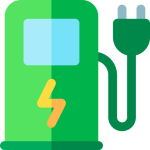A little-known traffic exemption in New South Wales and the ACT is giving electric vehicle owners a genuine on-road advantage: EVs displaying the official blue EV identifier can use T2 and T3 transit lanes at any time, regardless of how many people are in the car.
What the rule says
- EVs with the approved blue EV labels are permitted to drive in T2 and T3 transit lanes at all times, even with just the driver onboard.
- This sits alongside existing permissions for buses, taxis, motorcycles and bicycles to use transit lanes freely.
- Solo drivers of conventional vehicles may only enter transit lanes in limited circumstances, such as overtaking or preparing to turn, typically for no more than 100 metres.
Why transit lanes exist
Transit lanes were introduced to keep peak-hour traffic moving by prioritising vehicles that carry more people. They are designed to:
- Encourage ride-sharing and carpooling to reduce overall vehicle numbers.
- Improve journey times for high-occupancy vehicles and public transport.
- Cut congestion and tailpipe emissions by reducing stop-start traffic and idling.
How the EV exemption fits in
At first glance, giving solo EVs access to transit lanes appears to cut against the high-occupancy principle. Authorities in NSW and the ACT argue the policy supports a broader public interest: accelerating the shift to zero-emission vehicles. By offering a tangible day-to-day benefit-faster, more predictable commutes-governments aim to encourage EV uptake and reduce overall emissions over time.
Where and until when it applies
- New South Wales: The EV transit lane exemption, introduced in 2022, has been extended until 30 June 2027, as reported by Yahoo News.
- Australian Capital Territory: A similar exemption applies for EVs. Requirements for displaying the correct EV identifier may differ from NSW; check current ACT guidelines.
- Other states and territories: Jurisdictions such as Victoria and Queensland do not currently offer the same concession. EVs must follow the standard T2/T3 occupancy rules.
How to identify eligible vehicles
- NSW and ACT require EVs to display the approved blue EV identifier on their number plates to use the exemption.
- If your vehicle is not correctly labelled, you must follow standard transit lane rules, even if it is an EV.
- Check your state or territory’s road authority for how to obtain and display the identifier and whether plug-in hybrids are included.
Practical tips for EV drivers
- Watch for signage: Transit lanes are clearly marked T2 or T3. Normal lane rules apply outside signed times.
- Respect merge points: Enter and exit safely; do not weave in and out to jump queues.
- Stay updated: Policies can change. Review NSW and ACT road authority pages for the latest requirements, eligible vehicle types and enforcement details.
The bigger picture
Transit lane access is one of a suite of measures used to support EV adoption, alongside incentives like reduced registration charges, stamp duty concessions and public charging investment. While it slightly dilutes the carpooling incentive in the short term, officials argue the long-term emissions and air-quality benefits from faster EV uptake justify the trade-off.
Conclusion
For EV owners in NSW and the ACT, access to T2 and T3 lanes is a legitimate time-saver that reflects a wider policy push toward cleaner transport. If you drive an EV, make sure your vehicle is correctly identified to take advantage of the exemption. For everyone else, this is a sign of where road policy is heading: rewarding lower-emission choices while keeping cities moving.
FAQs
What is a transit lane?
A transit lane is a priority lane marked T2 or T3. T2 requires at least two occupants; T3 requires three or more. Buses, taxis, motorcycles and bicycles can generally use these lanes anytime.
Can any EV use transit lanes in NSW and the ACT?
Yes, provided the vehicle meets the jurisdiction’s definition of an eligible EV and displays the approved blue EV identifier. Without the identifier, standard occupancy rules apply.
Do plug-in hybrids qualify?
Eligibility can vary. Check the latest guidance from NSW and ACT road authorities to confirm whether your specific vehicle type is included.
Is the NSW exemption permanent?
No. In NSW, the exemption has been extended to 30 June 2027. Authorities may review it closer to that date.
Does this rule apply in other states?
Not currently. In states like Victoria and Queensland, EVs must follow the same occupancy rules as other vehicles in transit lanes.
What if I only use a transit lane briefly to turn?
All drivers, including those in conventional vehicles, may enter a transit lane for limited purposes such as overtaking or preparing to turn, typically for up to 100 metres, unless signage states otherwise.
About EV Evolution
EV Evolution is the leading online platform dedicated to Australian electric vehicle owners and enthusiasts. We foster a vibrant community, delivering essential EV news and insights, and enhancing user engagement through our innovative, AI-powered chatbot for dynamic discussions. Our mission is to empower Australian electric vehicle owners and enthusiasts by fostering a vibrant, AI-driven online community that connects, informs, and advances the nation’s electric vehicle landscape.




